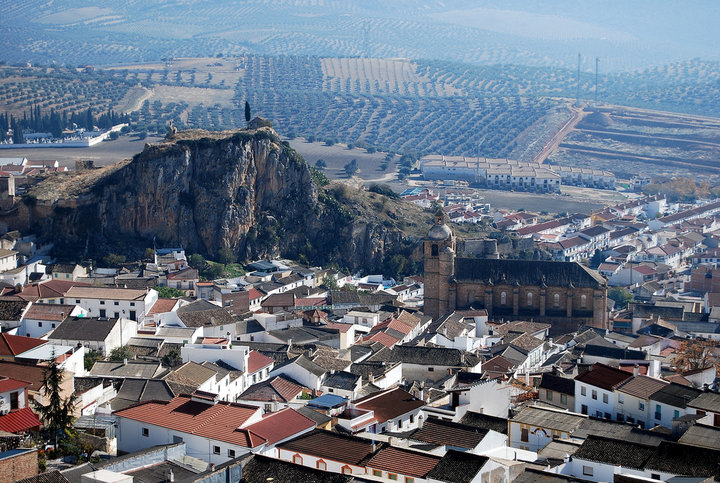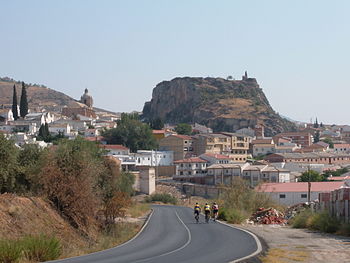Illora is located in Granada Region , Andalucia
Íllora is located on the Sierra de Parapanda. From here you can see the multi-coloured landscape with its olive groves, farmland and orchards on the Vega del Genil, and the Sierra Nevada, which lies to the east. The white houses of Íllora stand on the slopes of a rocky crag where they were originally built.
The remains of the watchtower Atalaya de la Mesa still stand on the road towards Alcalá la Real, as do the Torre de Tocón and the Torre de la Encantada in Brácana. You can enjoy excellent views along the entire length of the road to Montefrío, which goes up through the Sierra de Parapanda and the Sierra de Pelada.
Quick information of
Illora Andalucía:

10716
residents

Schools

Antequera 79km Málaga 105km Granada 40km Sevilla 230km

115km
to Malaga

Health clinic

Municipal pool

Beach
1h 20min

25km
to Granada

Shops, Bars, Restaurants

Golf nearby

Bus and train service

232km
to Sevilla
Illora Andalucía
Location
Local Information
.svg.png)
Ayuntamiento de Illora
Plaza del Arco s.n. 18260 Illora, Granada. Telephone: 958 43 39 26 Web: www.Illora.es
http://www.illora.es/

Illora Information
Some archaeological discoveries have been found in Íllora belonging to prehistory, the Neolithic and mainly the copper age. Towards the year 600 b.c the Carthaginians landed in the Iberian Peninsula imposing their authority on the Phoenicians and, with a clever policy, consolidate the foundations of their empire, including Illurco, which was the first name given to Illora. With the arrival of the Romans the colonies settled in the already existing villages. Of them, Plinio points out among the most celebrated of the interior to Illurco.
During the Muslim conquest there is less data on Íllora; nevertheless, it is deduced from the Christian chronicles that it must have been an important town with a fortress and suburbs. In June 1319, when the Vega of Granada was being devastated, the town of Íllora came into the possession of the infantes Pedro and Juan de Castilla. If they would have stayed one more day, affirms the Chronicle of Alfonso XI, they would have also taken its castle. On June 8 1486, the Catholic Kings conquered Íllora.

After the Reconquest, the manors did not reach similar dimensions to those of other areas of the country. The abandonment of the original Muslim owners of the land, passing into Christian hands was the reason why this town lost its power. Economically, this period would be based on subsistence agriculture, with wheat and barley constituting the population's food base.
During the first half of the nineteenth century Íllora will live a stage of stability that will be interrupted by the Napoleonic invasion and the subsequent War of Independence. With the return of King Fernando VII Íllora will regain its economic and social importance.

Fiestas
Paparanda-Folk International Festival. It was declared festival of National Tourist Interest by its important relevance and the diffusion of the popular and ethnic culture of countries of the five continents. During one week groups of music and dance perform.
Festividad en honor de San Rogelio. The third weekend of August the celebrations in honour of San Rogelio take place. Cultural, religious and musical acts are celebrated.
Día de San Marcos. People still celebrate a curious tradition of tied the Devil to which they make knots in the branches symbolizing the fact of immobilizing the evil.
Feria Real de Ganado. This Cattle Fair takes place in October and it is considered as one of the most important ones of Spain.
>> More information on towns of Andalucía